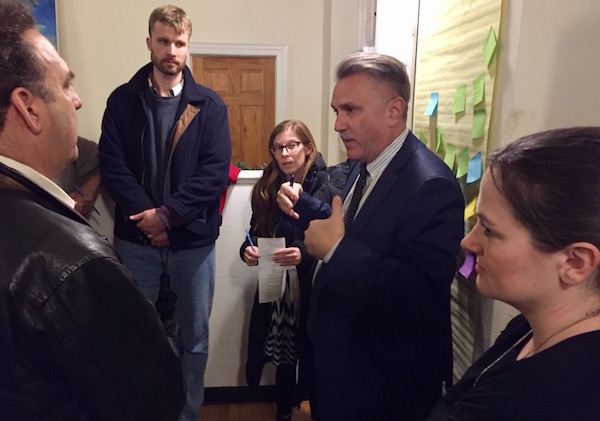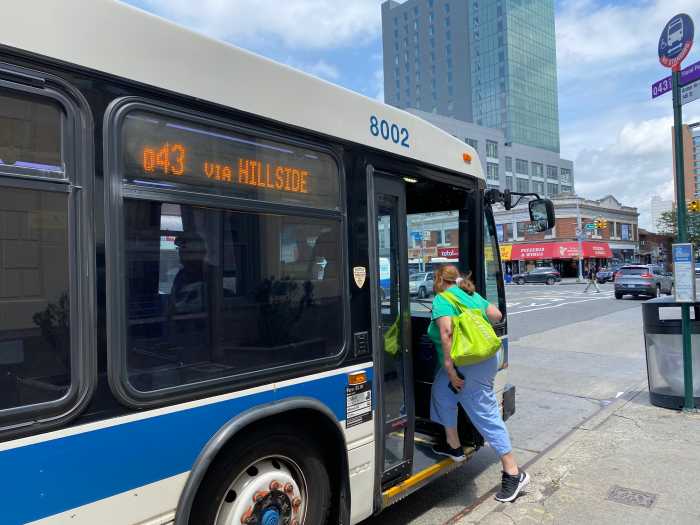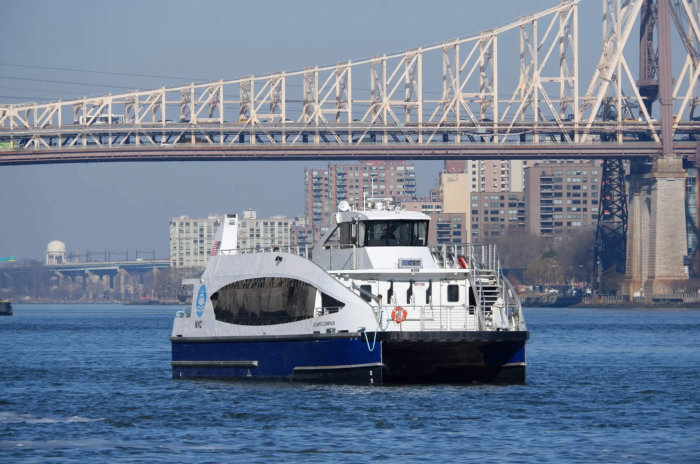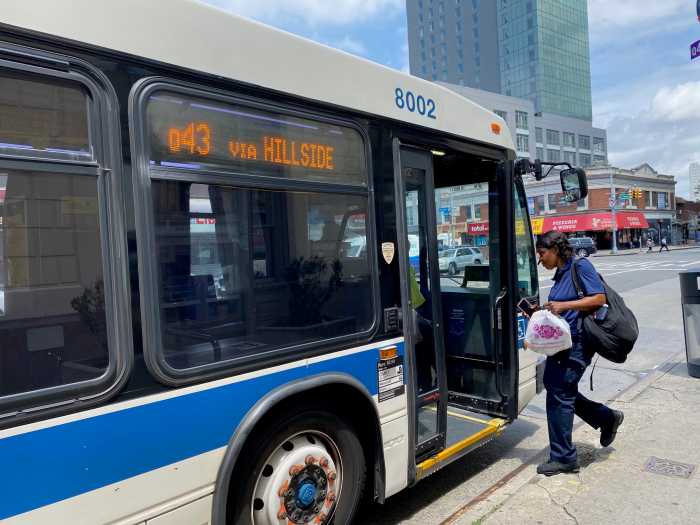
BY EILEEN STUKANE | After having their buttons pushed by –everything from a lack of communication to eminent domain threats, members of the Hell’s Kitchen community are hitting “restart” on their approach to the Port Authority of New York and New Jersey’s plans for expanding its aging bus terminal, now located between Eighth and Ninth Avenues from West 40th to West 42nd Streets.
At a December 6 planning meeting, Community Board 4 chair Delores Rubin announced that the dozens of people who signed in at the door would have the opportunity to voice their opinions and ideas as a new coalition working on the issue takes shape. Concerned residents were invited to participate in the coalition tentatively named the Hell’s Kitchen South Alliance — at that night’s meeting by way of small, think tank-like groups, and, moving forward, as active members.
Metro Baptist Church was a fitting venue for the meeting, as its location at 410 West 40th Street puts it squarely in the area floated as a viable site for a revamped bus terminal. The Port Authority’s initial plans were released without community input, with some scenarios involving the forced sale of residential and commercial property for the project through eminent domain.
In response to a concerted outcry from the community and elected officials, the Port Authority has scrapped all its plans and created a New York/ New Jersey Working Group comprised of eight members each — including electeds and community leaders — from New York and New Jersey. Now that everyone is sitting at the same table, the community has greater confidence its voice will be heard.
“Just like the community worked with the MTA on how to manage development rights on the Eastern Rail Yards, with the Port Authority, it’s the same thing,” said Joe Restuccia, executive director of Clinton Housing Development Company and a CB4 member. “The PA owns all of this land in Hell’s Kitchen. How do the zoning rights move around? How do they get a terminal? Where does it go? What happens, and how do we make sure that, just as in Hudson Yards, that the community gets affordable housing, open space, community services, all the benefits and necessities that we need? This is the same thing, happening 12 years later.”
CB4’s Port Authority Working Group laid the groundwork for the December 6 planning meeting by posting large sheets of paper along the church walls, each designating a different area of concern for the community: Small Business/ Community Services, Neighborhood Preservation, Air Quality, Parks, Transportation, Housing, and Additional Areas of Concern. Audience members were handed Post-it notes and encouraged to jot down their ideas and concerns and attach them to the mounted sheets of paper. As they did so, they mingled in discussion with other audience members and facilitators from CB4’s related committees.
Those facilitators then reported to the full crowd about the ideas they heard. Those mentioned most frequently included:
— Saving small local businesses being pushed out due to rising property values. The Reverend Tiffany T. Henkel, executive director of Rauschenbusch Metro Ministries and pastor at Metro Baptist Church who was the facilitator for Small Business/ Community Services, said residents mentioned that small businesses were being lost while bars proliferated. They were particularly concerned about the possible loss of the Big Apple and Esposito meat markets.
— The need for more schools.
— The preservation of artist studios.
— Maintaining a height limit on buildings. Restuccia, who was the Housing facilitator, reported that there is currently a 120-foot height restriction between Ninth and 10th Avenues, but a 250-foot restriction one block further east.
— Housing for people of lower income, and help in getting access to that housing.
— The use of platforming over bus ramps coming into the city, with park land designed on top of them.
— Green roof installations.
— Small green spaces created to attract birds and butterflies, as opposed to asphalt playgrounds.
— Alternative energy buses, such as those powered by electricity, with the infrastructure adapted to support them.
— The extension of the Number 7 subway, possibly into New Jersey.
— Wider sidewalks.
On the issue of saving small local businesses, Rubin said restoring the appropriate balance would likely require more than one solution — and legislation, as well. “We need to voice that issue and let our elected officials know that’s important to us,” she said.
Bob Minor of the Hell’s Kitchen 50-51 Block Association proposed a plan for relocating the bus terminal to the Meadowlands in New Jersey — platforming it over parking lots for electric buses and using solar panels on the roof to charge them. Extending the 7 train to that new terminal, he said, would allow passengers to complete their commute to Manhattan via an expanded subway system.
One audience member suggested that the new bus terminal could instead be built on pylons in the Hudson River, in a fashion similar to the Pier 55 floating park currently being constructed in the Hudson.
The CB4 working group noted that an expanded bus terminal is just one piece of a much larger West Side transportation discussion that also encompasses consideration of an expanded Lincoln Tunnel, movement on the Gateway Program, which will increase rail track and tunnel capacity between New Jersey and New York, more Trans-Hudson ferry service, and a possible 7 train extension to Secaucus. The realization of all these plans will be years in the making — but for West Siders, there is recognition that the “making” is here now.
“We will synthesize this information as the coalition comes together,” Rubin said. “This will be a starting point for the conversation. We’re going to be activists.”






































